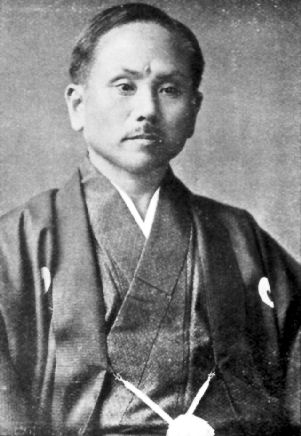ONE HUNDRED YEARS AFTER FUNAKOSHI GICHIN'S PERFORMANCE IN TOKYO
09.05.2022 19:24


Article by Emanuel Giordano
“Around the time the education minister was organizing the first national athletics demonstration in mainland Japan, the Okinawa Central Physical Education Secretariat wanted me to introduce Karate, the martial art that was secretly passed down for generations during the ancient Kingdom of the Ryukyu. The demonstration took place in Ochanomizu, a district of Tokyo. I prepared photographs and wrote three articles to support my explanations on kata, kumite and training support tools. According to the schedule, I would return to Okinawa shortly after the conclusion of the event. My presentation, however, impressed more than expected. To my amazement they asked me to stay in Tokyo to give other presentations. Among the dozens of groups that asked for presentations and demonstrations were the Kodokan, the Toyama Military School, the Judicial Association, the Department of Education and the Association for Research on Physical Education in Secondary Schools. At the dinner following my presentation, I met many people, including Kosugi Hoan [real name: Kosugi Misai], artist and member of the Tokyo Poplar Tabata club. During the event, he asked me how it would be possible to have clarifications about Karate if I had returned to Okinawa without first publishing a book on the subject. The idea was not new to me, but thanks to his support and the fact that he took charge of drawing all the necessary illustrations, I decided to stay to write the book. I started the next day and, after two months, the project was completed.” (Taken from the article Karate, written by Funaoshi G. in 1934)
These are the words that Funakoshi sensei wrote twelve years after his demonstration held in May 1922 during Japan's first national athletic exhibition. The master should have returned to Okinawa immediately after the performance, but the success of the presentation of Karate would have changed Funakoshi sensei's plans and the future of our martial art! Thanks to the interest shown by various institutions and characters, not only did Funakoshi sensei stop in Tokyo to teach Karate, but he also wrote his first book: Ryukyu Kenpo Tode.

In another article, Funakoshi spoke of the interest shown by the founder of Judo:
“The ensuing success attracted the attention of the Kodokan master, Kano Jigoro, the famous founder of Judo. Through an intermediary I was informed that Kano wanted to study Karate. This was not possible, however, as I had to return to Okinawa immediately after the demonstration. However, Kano sensei insisted [...] he asked me to wait three days to be able to gather all his students. Three days later I demonstrated the kata and the basic principles of Karate several times in front of a hundred of his students. I was amazed by their respect and interest.” (Taken from the article Karate-do, by Funaoshi G.)

The demonstration for the students of Kano sensei was made by Funakoshi sensei and by another "product" of Okinawan school karate: Gima Shinkin sensei. The latter had studied Karate at Shihan Gakko under the guidance of Yabu sensei, and was also a black belt in Judo. Funakoshi sensei sewed two rudimentary karategi based on the judogi model, and during the performance he (reluctantly) wore a black belt, although Karate did not yet have a degree system. Funakoshi performed the Kusanku kata, while Gima performed the Naihanchi kata, which were followed by some applications.
The friendship between Funakoshi and Kano turned out to be very important for the spread of Karate, a martial art which, at the beginning, was registered by the Dai Nippon Butokukai as a branch of Judo. As for Funakoshi sensei, he began a very hard path, also characterized by a period of poverty during which he had to carry out the most humble jobs, as well as resorting to the pawnshop several times. His efforts led to a greater notoriety of Karate, first in Japan and then in the West, a notoriety that also prompted the Okinawan masters to reorganize the teaching and dissemination of Karate, also starting collaborations between the different styles.
In short, a hundred years ago, thanks to the efforts and sacrifices of Funakoshi sensei, the conditions were created that allowed Karate to spread throughout the world. All the more reason, even those who practice sporting Karate should study the history of Karate, and know their roots!
